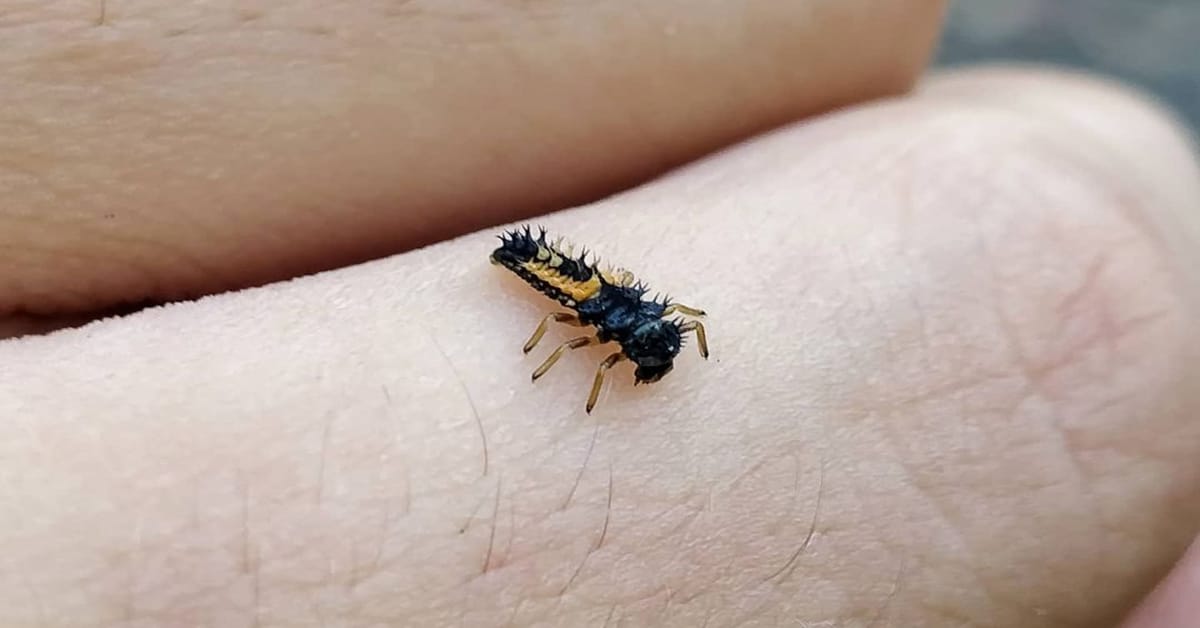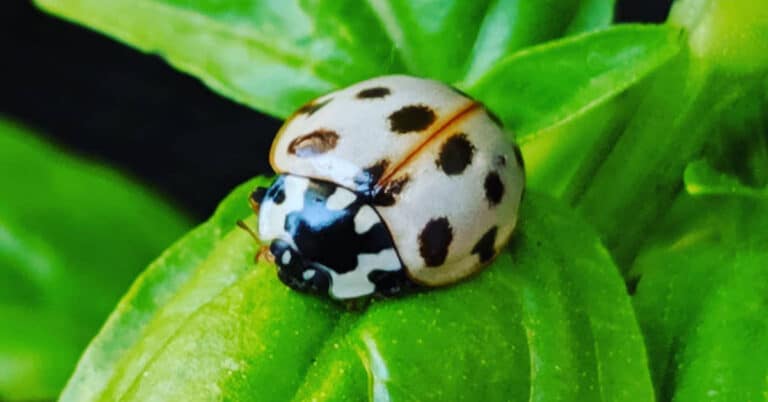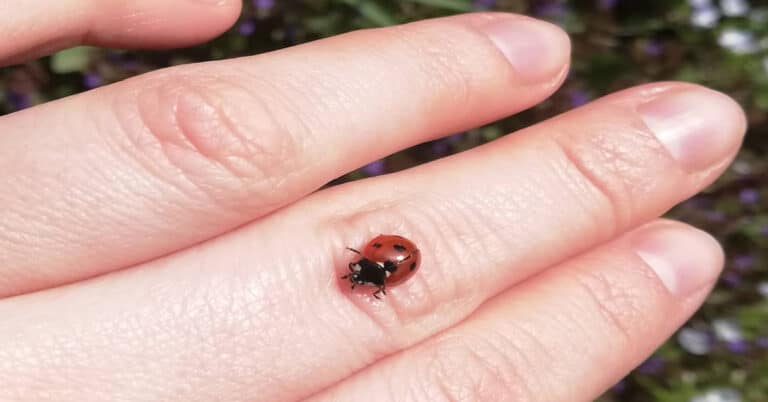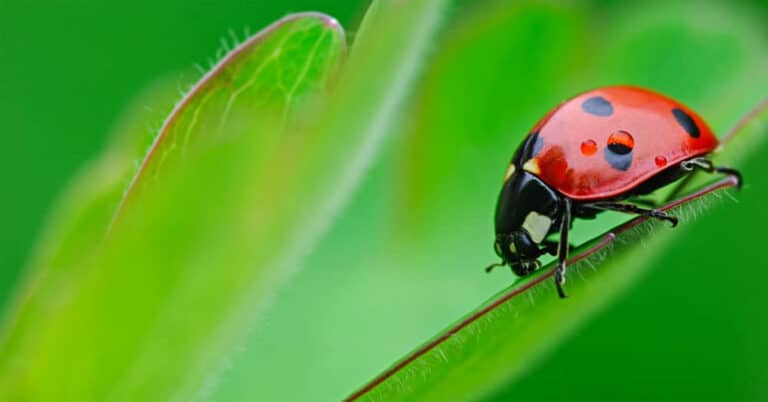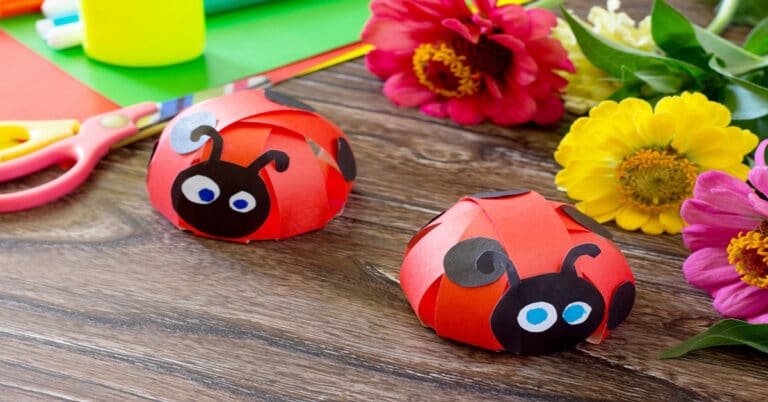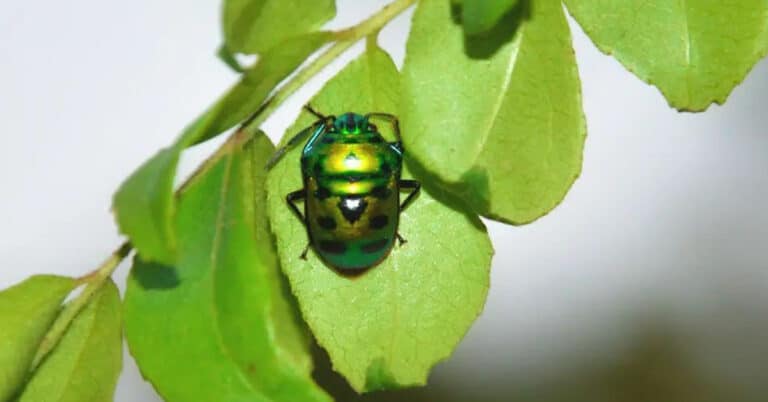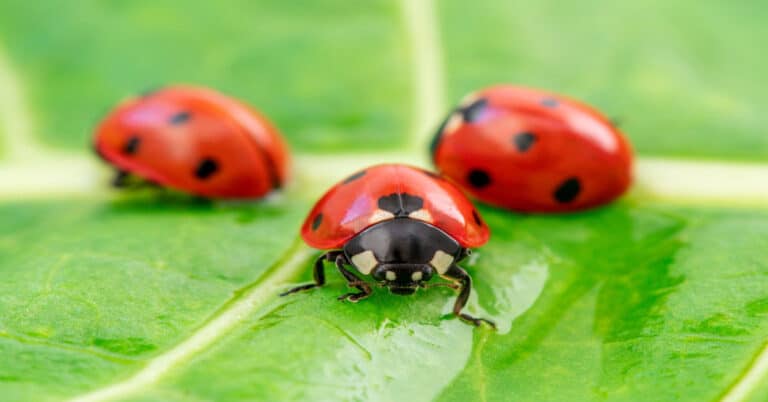Ladybug Larvae
Who doesn’t love cute little insects with beautiful and colorful appearances? Their most common name is ladybugs. However, let’s be clear: They aren’t bugs but beetles. These beautiful creatures are known to be harmless and very beneficial. That’s why everyone welcomes them in their garden. While looking at their colorful shells and counting their dots, have you ever wondered what baby ladybugs look like?
You might be surprised, but baby ladybugs are nothing like adult ones. You might even be a little disappointed when seeing them. Ladybug larvae are not something you want crawling on your plants instead of brilliant red shells and black spots. Well, we suggest you take a close look before you try to destroy these garden companions; they might become natural pieces of art one day.
How should we identify them? In this article, we will take a closer look at ladybug larvae and learn more about their anatomy.
What are Ladybug Larvae?
A larva is the newly hatched juvenile ladybug. The alligator-like larva has a spiky exoskeleton and an elongated body, making it kind of ugly. However, ladybug larvae are voracious eaters. Believe it or not, larvae eat a lot of aphids and protect gardens from damage. At least that’s what National Geographic states. One ladybug can eat up to 5,000 insects in its lifetime. That is why farmers and gardeners like them.
A larva normally goes through four stages of development before becoming an adult ladybug. It transforms from a black, unidentified, strange thing into a beautiful creature. The larvae of ladybugs come in a variety of shapes, sizes, and colors. It’s often difficult to tell if they are ladybug larvae or not due to their appearance. Their shapes differ and depend on the species.
What they all have in common is that these little predators have vivid markings on their bodies and are spiky and black. Because of their scary looks, they may even look frightening, yet they are completely harmless, and without them, we wouldn’t have pretty ladybugs in our gardens.
Anatomy of Ladybug Larvae
A single tiny larva emerges after the ladybug eggs hatch. It has a segmented body that measures about a quarter to a half-inch in length and is predominantly dark in color with brilliant markings.
The body is surrounded by three pairs of legs. The mandibles are strong enough to eat plants or aphids, and the head is also highly developed. The pronotum, mesonotum, and metanotum are the three segments that make up the thorax and create the anatomy of larvae.
Development Stages
A ladybug developmental stage that occurs between each molt is known as an instar. The larva sheds its old exoskeleton and grows a new one after each instar, considerably increasing its size. Around four days after the eggs have been placed, larvae will emerge from the eggs. Depending on the species and other environmental variables such as temperature and humidity, the time for this may increase or decrease.
The larva is said to be in its first instar when it hatches from its egg. The first instar larva appears to be the most restricted in terms of movement and has a high mortality rate. The larva then moves on to the second instar until it is ready to pupate and transform. When it reaches the fourth larval instar, it is completely developed and attaches itself to a well-protected location to begin the process of developing into a pupa.
The larva stops moving and eating before shedding its last skin and uses anal pads to stick itself to a surface. Molting begins at the top of the skull and moves downward to the belly. When the larva’s cuticle hardens after it sheds its cuticle, it frees itself from the shell and begins to move.
How Long Does a Ladybug Larva Last?
Because female ladybugs put their eggs near aphids and other bug colonies to provide a food source, the baby larva can feed on aphids and other soft-bodied insects, which gives them an excellent start in life.
Ladybug larvae normally stay larvae for three to four weeks, giving them ample time to devour as many aphids as possible while still storing enough energy to go to the next stage. Ladybug larvae hatch in two to ten days from their eggs. This timescale can be shortened or lengthened depending on the type of species and environmental influences such as temperature and weather.
How to Identify Ladybug Larva
You may have observed ladybug larvae in your garden munching on aphids and wondered what those little critters were. Ladybugs are easily identified by their brightly colored and speckled bodies, yet baby ladybugs are often overlooked due to their significantly different appearance from adult ladybugs.
If you want to identify ladybug larvae, you should know that they have spots and spines instead of brilliant red or orange bodies and black dots, and the last thing you want to do is kill these incredibly innocent and valuable garden companions before they mature into adult ladybugs, so be careful while taking care of your garden.
Larvae vary in shape and color depending on the type of ladybug to which they belong. On the other hand, the ladybug larva is around 12 inches long and has an elongated and spiky body.
What makes them different from other insect larvae? Unlike other insects, they have more visible legs and stroll rather than crawl. However, not all lady beetles have the same type of larvae, but they can be very different. Here are descriptions of some of the most famous types of ladybug larvae and how we can tell if it’s them.
Seven-spotted ladybug
The Seven-spot ladybug is one of the most common ladybug species. You might be curious to see how this adorable creature appears as a larva. The larvae of seven spotted ladybugs are black in appearance and have small hair-like spines aligned on their bodies. Colored markings are a distinctive feature that helps identify seven-spotted ladybug larvae.
Harlequin ladybird
The harlequin ladybird’s freshly born larva is dark gray with a black short exterior spine. Orange-colored points form an L shape on the top side of the first abdominal segment and extend to the fifth abdominal segment.
Fourteen-spotted Ladybug
The larvae of fourteen spotted ladybugs are black with white patterns around the head and limb joints. Small pointed projections from the final abdominal segment are the most distinguishing characteristic. The larva’s body is smooth, with just a few tiny hair-like projections and no spines.
Two-spotted Ladybug
The larva of a two-spotted ladybug is dark gray in appearance, with black bumps on the top body segments. Its grayish body has white spots on it. A pair of central struma on segment four and a pair of lateral white-yellow struma on segment one may also be seen.
Orange Ladybug
The orange ladybug is pale orange with 14 to 16 dots. It mainly feeds on fungus. On the body of the orange ladybug larva are dirty cream-colored streaks and regular black spots. It measures 15 mm long and feeds mostly on mildew.
What Do Ladybug Larvae Eat?
The menu of ladybugs is very diverse, and so is the menu of larvae. It takes approximately two weeks for the larva to grow fully. In the meantime, a single larva can consume 350 to 400 aphids. Not only aphids but scale insects, adelgids, mites, and insect eggs are among the several soft-bodied plant parasites on which larvae feed.
Ladybug larvae do not discriminate while eating and, believe it or not, will occasionally consume ladybug eggs. The newly hatched larva eats until it outgrows its cuticle or soft shell and then molts.
Can You Keep Ladybugs In Your Garden?
Since ladybugs are beneficial, many gardeners welcome them in their gardens and keep them there on purpose. However, if your garden does not provide a sufficient number of insects for them to dine on, they will go in search of better feeding grounds. Because the larvae can not fly, they will remain and eat aphids. So try not to get rid of them.
Do not use pesticides to keep them all there as long as possible, and avoid harming them. Aside from outright killing the lady beetles, removing their food supply eliminates the need for them to remain. Instead, we suggest you trust nature. Good and bad insects will balance each other in your garden. You can all cohabit peacefully as long as things are kept in check.
Final Words
These beautiful creatures take a long journey to become what they are famous for. They are not beautiful, colorful insects at every stage of development, but they still give the best example of how surprising nature can be. Ladybirds are not only charming in appearance but also have many benefits. That’s why it’s important to protect them at all costs and avoid killing them with pesticides.
So, next time you see something like larvae in your garden, be careful not to damage one of the most beautiful creatures of nature, which has no harm to us but many benefits.

Nato is a content writer and researcher with a background in psychology who’s eager to explore the wonders of nature. As a travel enthusiast and animal lover, she hopes to inspire others to discover and cherish the beauty and importance of the natural world.

